Types of Lights
Energy conservation has emerged as a major concern for individuals, businesses, and international organizations. One of the solutions to achieve conservation goals is using energy efficient bulbs at home, public, and commercial places. This post takes a closer look at the main types of bulbs to help you emphasize the concept of conservation.
Before delving deeper into the different types of lights, it is prudent to understand common terms:
- Lumens: These are measurement units describing the amount of light that is seen by the human eye.
- Watt (W): This is another unit of measurement for energy that corresponds to the power that is required for an electric circuit. In this case, it is the power for lighting a bulb.
- Efficiency: This is the quantity of light energy that comes out in comparison to the electrical energy that goes into it. If a bulb is energy efficient, it means that it wastes less energy.
- Lux: This is the equivalent to one lumen spread in one square meter. It is the measurement of light intensity that tells you the number of lumens required to light an area.
Indoor Lighting
Some of the common indoor lighting bulbs are the incandescent types of bulbs that come in 40W, 60W, and 100W. Others include LED and CFL.
Incandescent Bulbs

These bulbs have been in the market for more than 100 years since their invention by Thomas Edison. They work when a filament referred to as tungsten is heated by electricity to start glowing. Because of this, the bulbs also get hot which means they are inefficient. These bulbs are now being banned in some countries.

Compact Fluorescent Light Bulbs (CFL)
 These are spiraled lighting lamps that are more energy efficient compared to incandescent bulbs. CFLs operate by passing electricity via gas filled in the coils to generate light. The coils are coated so that the light is white. Though CFL gets warm, it is not as hot as incandescent bulbs.
These are spiraled lighting lamps that are more energy efficient compared to incandescent bulbs. CFLs operate by passing electricity via gas filled in the coils to generate light. The coils are coated so that the light is white. Though CFL gets warm, it is not as hot as incandescent bulbs.
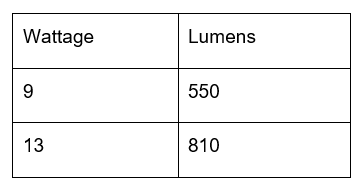
Light Emitting Diodes (LED)
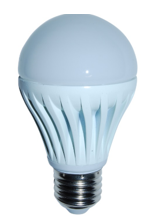 LED lamps represent a deviation from the technology that is used on CFL and incandescent bulbs. Instead, LED emit white light when current pass through a semiconductor. The complicated process saw the founders of LED, Professors Isamu Akasaki, Hiroshi Amano and Shuji Nakamura, win Nobel Prize in the 1990s. It is important to note that though the light that LED emits is white, it contains all colors of the rainbow.
LED lamps represent a deviation from the technology that is used on CFL and incandescent bulbs. Instead, LED emit white light when current pass through a semiconductor. The complicated process saw the founders of LED, Professors Isamu Akasaki, Hiroshi Amano and Shuji Nakamura, win Nobel Prize in the 1990s. It is important to note that though the light that LED emits is white, it contains all colors of the rainbow.

Outdoor Lighting
Unlike indoor lamps, outdoor models are different because they have to generate more light. They also have to light a bigger area. Here are the common outdoor lamps:
Halogen Bulbs
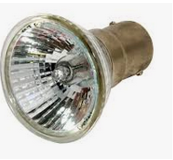 These lamps are mainly used as spotlights in homes or as floodlights in stadiums. They operate like incandescent lamps by passing electric current via tungsten current. But unlike the incandescent models, they also contain halogen. Note that though halogen lamps have a longer lifespan, they are brighter and hotter than incandescent lamps.
These lamps are mainly used as spotlights in homes or as floodlights in stadiums. They operate like incandescent lamps by passing electric current via tungsten current. But unlike the incandescent models, they also contain halogen. Note that though halogen lamps have a longer lifespan, they are brighter and hotter than incandescent lamps.

 These lamps are commonly used in stadiums and street lighting. They produce a lot of light and provide great color rendition. This implies that the objects they illuminate appear their true colors.
These lamps are commonly used in stadiums and street lighting. They produce a lot of light and provide great color rendition. This implies that the objects they illuminate appear their true colors.
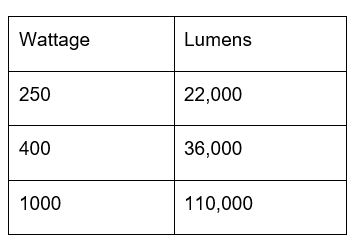
High-Pressure Sodium (HSP)

HPS lamps are the commonest in street lighting, especially in major cities. They generate light by passing current via a mixture of gasses. Another notable thing about the lamps is that they require limited maintenance. Their energy efficiency is fair and generates a yellow-orange glow.
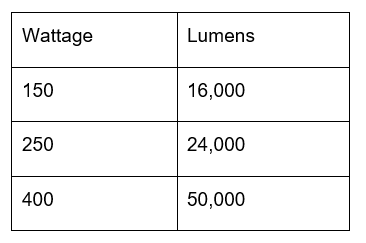
Low-Pressure Sodium (LPS)
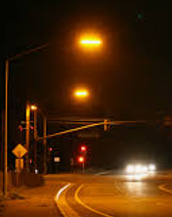 These lamps work just like the HPS but generate white light that contains all the colors of the rainbow. This means that they generate exclusive yellow light and the illuminated objects have a characteristic gray appearance.
These lamps work just like the HPS but generate white light that contains all the colors of the rainbow. This means that they generate exclusive yellow light and the illuminated objects have a characteristic gray appearance.

LED Street Lamps
 The LED technology has developed so much and the technology has now advanced to outdoor lighting. LED street lamps are preferred because they are more energy efficient. The lamps produce blue light. This means it can have negative impacts on wildlife and humans in the case of too much exposure.
The LED technology has developed so much and the technology has now advanced to outdoor lighting. LED street lamps are preferred because they are more energy efficient. The lamps produce blue light. This means it can have negative impacts on wildlife and humans in the case of too much exposure.

The Final Take
If you are looking forward to lighting indoor or outdoor space, it is important to understand how different lamps work. This post brings you the common types of lamps to help you pick the best and advance your focus on conservation.
